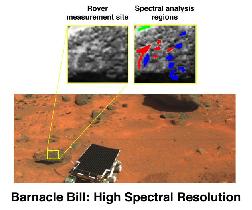This image shows Rocks explored by the Rover.
Click on image for full size
Image from: NASA/JPL
Rock weathering on Mars
The rocks explored by the Mars Pathfinder's Rover are classified into two groups according to how they weather. Differing weathering properties may indicate differing conditions of deposition because impact deposits are usually much less eroded than fluvial deposits. The two classes are:
- weathered rock & fluvial conditions of deposition
- unweathered & impact conditions of deposition
- usually dark volcanic rock, see rock classes
- contains vesicles (small holes)
- usually angular in shape or broken
Yogi was a bright rock and was marked by ventifacts.
Barnacle Bill was a dark rock and not well weathered. This suggests that Barnacle Bill was put in place as a result of an impact.
By figuring out the conditions under which the rocks were deposited, scientists hope to learn where the rocks came from, and what happened to the Martian water.
You might also be interested in:
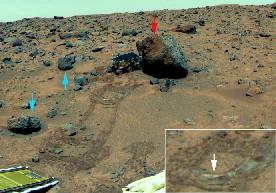
The rocks explored by the Mars Pathfinder's Rover have been classified into three kinds by scientists analysing the Rovers' findings. Potentially the rocks may all be the same kind of rock, all having
...more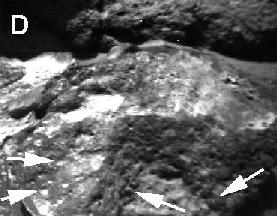
This image shows pits and holes (ventifacts) in a small rock found by the Mars Pathfinder Rover. These ventifacts are artifacts of weathering on Mars and were created by wind erosion. The Souffle rock
...more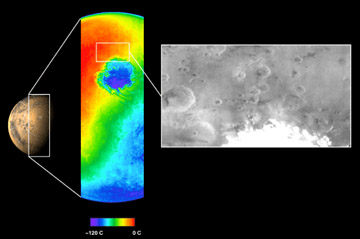
The Mars Odyssey was launched April 7, 2001, from Cape Canaveral Air Force Station in Florida. After a six-month, 285 million-mile journey, the Odyssey arrived at Mars on October 24, 2001 (02:30 Universal
...more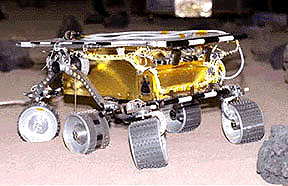
The Mars 2005 mission is still in the planning stages. It is set to launch in the year 2005.
...more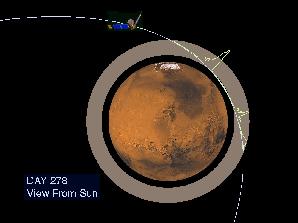
On September 12, 1997, the Mars Global Surveyor successfully entered a highly elliptical orbit around Mars. To get into the near-circular, near-polar, low-altitude orbit necessary to map the surface of
...more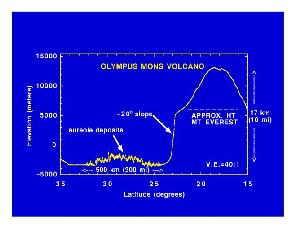
Mars Global Surveyor carries an instrument which measures the altitudes of things. The instrument is called an altimeter, or "altitude-meter". The graph to the left shows the results returned from Mars
...more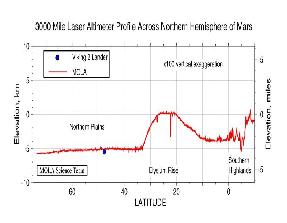
Mars Global Surveyor carries an instrument which measures the altitudes of things. The instrument is called an altimeter, or "altitude-meter". The graph to the left shows Mars Global Surveyor's measurement
...more


